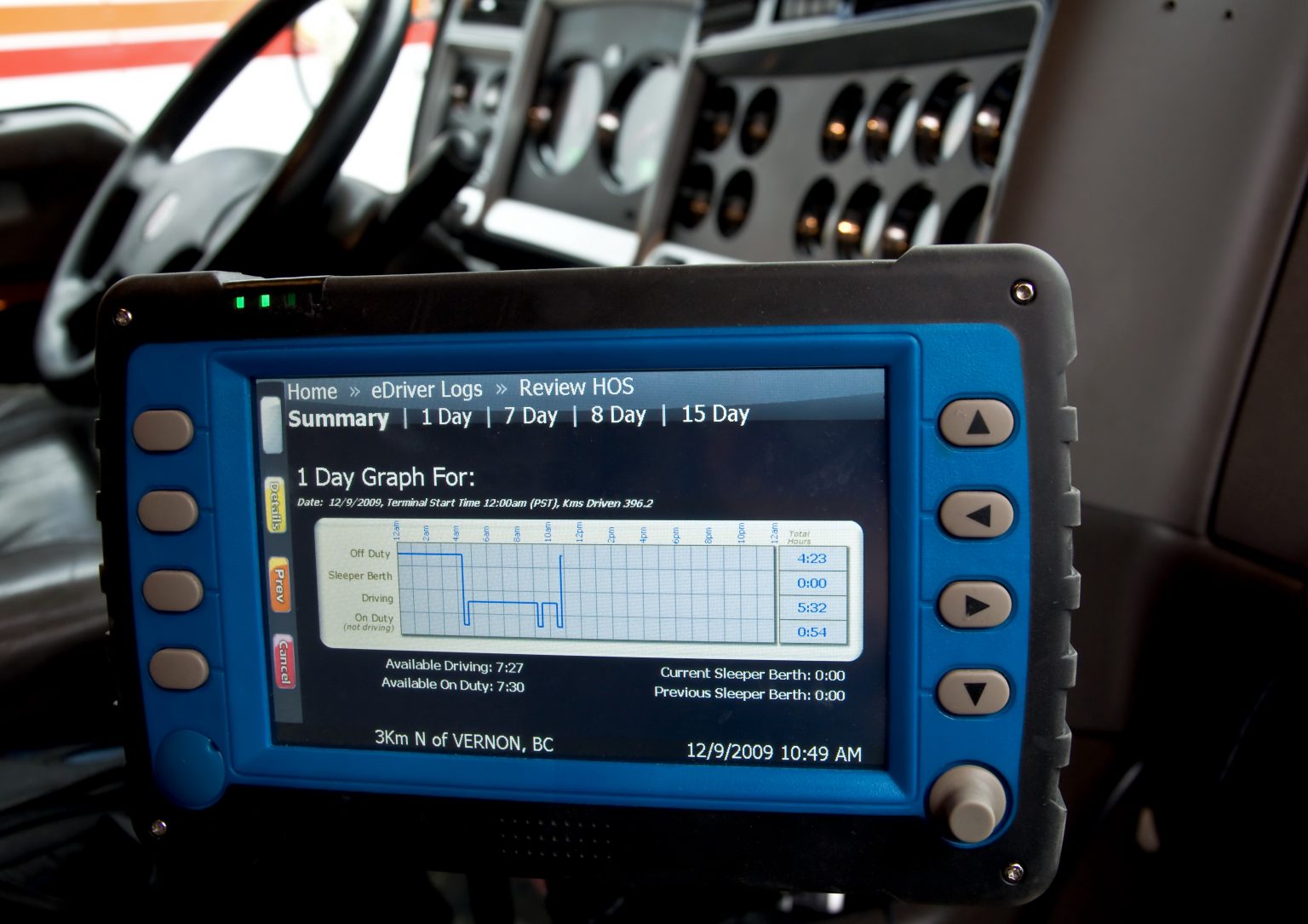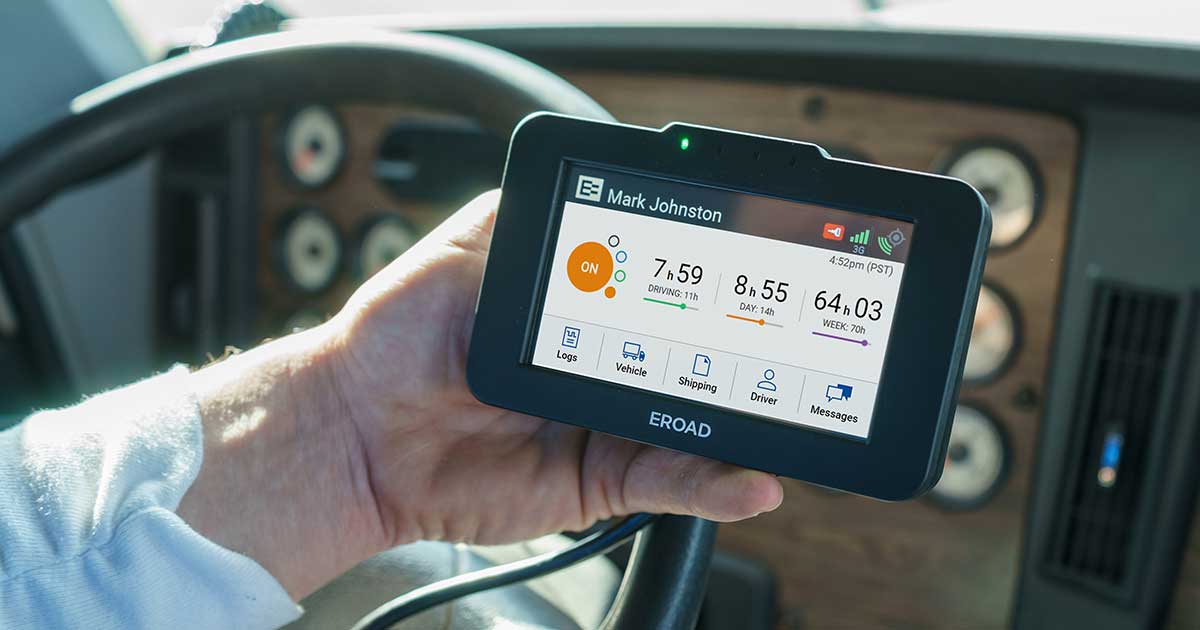ELD for Trucks For Sale: Your Comprehensive Guide to Electronic Logging Devices sale.truckstrend.com
The trucking industry operates on the pillars of efficiency, safety, and compliance. In recent years, no single piece of technology has reshaped these pillars quite like the Electronic Logging Device (ELD). Far from being just another gadget, an ELD is a federally mandated device designed to accurately record a driver’s Hours of Service (HOS), replacing traditional paper logbooks. For truck owners, fleet managers, and owner-operators alike, understanding "ELD for trucks for sale" isn’t merely about acquiring a device; it’s about investing in compliance, optimizing operations, and ensuring the safety of drivers and the public.
Whether you’re an independent owner-operator looking for a single unit or a large fleet seeking a scalable solution, the market offers a diverse range of ELDs. This comprehensive guide will navigate the complexities of ELD solutions, helping you make an informed decision when it comes to purchasing the right system for your truck or fleet.
ELD for Trucks For Sale: Your Comprehensive Guide to Electronic Logging Devices
Understanding the ELD Mandate and Its Impact
The ELD mandate, enforced by the Federal Motor Carrier Safety Administration (FMCSA), came into full effect in December 2017, requiring most commercial motor vehicle (CMV) drivers to use ELDs to record their HOS. The primary goal was to improve road safety by ensuring drivers adhere to HOS regulations, thereby reducing fatigue-related accidents.
Who Needs an ELD?
Generally, any driver required to maintain a Record of Duty Status (RODS) must use an ELD. This includes most commercial drivers operating vehicles weighing 10,001 pounds or more, or transporting placarded hazardous materials, or carrying 9 or more passengers for compensation (or 16 or more non-compensation).
Key Exemptions:
While broad, there are some notable exemptions:
- Drivers using paper logs for 8 days or less within any 30-day period.
- Drivers conducting drive-away/tow-away operations, where the vehicle is the commodity.
- Drivers of vehicles manufactured before model year 2000.
- Short-haul drivers operating under the 100 or 150 air-mile radius exemptions (though they still must comply with HOS rules).

Consequences of Non-Compliance:
Failing to comply with the ELD mandate can lead to severe penalties, including hefty fines, out-of-service orders, and negative impacts on a carrier’s Compliance, Safety, Accountability (CSA) score. This underscores why acquiring a compliant ELD is not just an option but a critical necessity for any trucking operation.
Key Features to Look for in an ELD System
When evaluating "ELD for trucks for sale," it’s crucial to look beyond basic compliance and consider features that enhance efficiency, safety, and overall fleet management.
- FMCSA Compliance & Certification: This is non-negotiable. Ensure the ELD is listed on the FMCSA’s registered ELD list. This guarantees it meets the technical specifications required by the mandate.
- Ease of Use: A user-friendly interface is paramount for drivers. Look for intuitive apps, clear displays, and simple workflows for logging duty status changes, pre-trip inspections, and off-duty periods.
- Reliability and Durability: The hardware must withstand the harsh conditions of trucking. Look for robust construction, secure connections, and stable software.
- Connectivity: Most ELDs connect via cellular data, Bluetooth, or Wi-Fi. Ensure reliable connectivity to transmit data to the backend system.
- GPS Tracking & Geofencing: Beyond HOS, many ELDs offer real-time GPS tracking, allowing fleet managers to monitor vehicle locations, optimize routes, and create geofences for arrival/departure alerts.
- DVIR (Driver Vehicle Inspection Report) Capabilities: Digital DVIRs streamline pre-trip and post-trip inspections, making it easier to log defects and track maintenance needs.
- IFTA (International Fuel Tax Agreement) Reporting: Many advanced ELD solutions automate IFTA reporting by tracking mileage per jurisdiction, saving significant administrative time.
- Real-time HOS Tracking: Drivers should be able to see their remaining driving time at a glance, helping them plan routes and breaks effectively to avoid violations.
- Fleet Management Integration: Consider if the ELD integrates with other fleet management software, such as dispatch, maintenance, or payroll systems, for a holistic operational view.
- Customer Support: Reliable 24/7 customer support is vital for addressing technical issues, HOS questions, or roadside inspection queries.
- Scalability: If you plan to grow your fleet, ensure the ELD solution can easily scale to accommodate more vehicles and drivers without a complete system overhaul.

Types of ELD Solutions Available for Purchase
The market for "ELD for trucks for sale" offers several distinct types of solutions, each with its own advantages and disadvantages.
- Dedicated ELD Devices: These are standalone hardware units specifically designed for ELD functionality. They often come with a built-in screen and are hardwired into the truck’s engine control module (ECM).
- Pros: Highly durable, often come with robust features, less susceptible to driver personal device issues.
- Cons: Higher upfront hardware cost, screen size might be fixed, less flexible for future upgrades.
- BYOD (Bring Your Own Device) / App-based ELDs: This popular option involves a small dongle that plugs into the truck’s ECM, communicating via Bluetooth or Wi-Fi with a driver’s smartphone or tablet running a dedicated ELD app.
- Pros: Lower upfront hardware cost (if drivers already own compatible devices), flexible screen size (using larger tablets), easier software updates.
- Cons: Relies on driver’s personal device battery and data plan, potential for distractions, device compatibility issues.
- Integrated Telematics Solutions: Some ELDs are part of a broader telematics platform that offers a suite of services beyond HOS, including fleet tracking, vehicle diagnostics, dashcams, and dispatch tools.
- Pros: Comprehensive fleet management, single vendor for multiple needs, robust data integration.
- Cons: Higher overall cost, may include features you don’t immediately need, can be more complex to set up.
How to Choose the Right ELD for Your Fleet (or Single Truck)
The decision-making process for "ELD for trucks for sale" should be strategic and tailored to your specific operational needs.
- Assess Your Needs:
- Fleet Size: Are you an owner-operator, a small fleet, or a large enterprise? This dictates scalability requirements and pricing models.
- Budget: Determine your upfront hardware budget and your recurring monthly subscription budget.
- Desired Features: Beyond compliance, what additional functionalities (GPS, IFTA, DVIR, dashcams) would genuinely benefit your operation?
- Research and Compare:
- FMCSA List: Start by consulting the FMCSA’s list of registered ELDs to ensure compliance.
- Reviews: Read reviews from other truckers and fleet managers on independent forums and review sites.
- Demos: Request demos or trials from top contenders to experience the user interface and functionality firsthand.
- Consider Installation Complexity: Some ELDs are truly plug-and-play, while others require professional installation. Factor this into your decision and budget.
- Evaluate Pricing Models: Understand the difference between one-time hardware costs and recurring monthly/annual subscription fees. Some providers offer bundled pricing or discounts for longer contracts.
- Customer Support: Test their customer service responsiveness during the sales process. This is a good indicator of future support quality.
- Read the Fine Print: Pay close attention to contract terms, data plans, cancellation policies, and warranty information. Avoid long-term contracts with hidden fees if flexibility is important.
The Purchase Process: Where to Buy ELD Devices
Once you’ve narrowed down your choices, you’ll need to know where to find "ELD for trucks for sale."
- Direct from Manufacturers: Many top ELD providers sell directly from their websites. This often provides the best access to product information, technical support, and potentially promotional offers.
- Authorized Dealers/Resellers: Some ELD companies work with a network of authorized dealers. These local partners can offer personalized service, installation support, and training.
- Online Marketplaces: While platforms like Amazon or eBay might list ELDs, exercise extreme caution. Ensure the seller is reputable, the device is genuinely FMCSA-certified, and the warranty and support are valid. It’s often safer to stick to direct or authorized channels.
- Fleet Management Solution Providers: If you’re looking for an integrated telematics system, these providers will bundle ELD functionality with their broader offerings.
ELD Pricing: What to Expect and Budget For
The cost of "ELD for trucks for sale" can vary significantly based on the provider, features, and hardware type. It generally involves two main components:
- Hardware Cost: This is a one-time upfront cost for the ELD device itself.
- BYOD Dongles: Typically range from $100 to $300.
- Dedicated ELD Units: Can range from $200 to $800 or more, depending on features and screen size.
- Some providers offer "free" hardware with a long-term contract, where the cost is amortized into the monthly fee.
- Monthly/Annual Subscription Fees: This is a recurring cost for the software, data plan, cloud storage, and access to the backend fleet management portal.
- Basic HOS Compliance: Typically ranges from $20 to $40 per truck per month.
- Advanced Features (GPS, DVIR, IFTA, Diagnostics): Can range from $40 to $80+ per truck per month.
- Annual subscriptions often offer a discount compared to monthly payments.
Potential Hidden Costs:
- Installation Fees: If you opt for professional installation.
- Data Overages: If your plan has a data cap (less common with ELDs designed for continuous use).
- Cancellation Fees: If you break a long-term contract.
- Training Costs: For drivers or administrative staff.
Table Price: Complete Information about ELD for Trucks For Sale (Estimated Ranges)
Please note: These prices are estimates and can vary based on promotions, contract length, and specific feature packages. Always request a detailed quote directly from the provider.
| ELD Provider (Example) | Hardware Cost (Est.) | Monthly Subscription (Est.) | Key Features (Summary) | Best For / Notes |
|---|---|---|---|---|
| Samsara | $129 – $299 (often free with contract) | $30 – $60+ / month | HOS, GPS Tracking, DVIR, IFTA, Vehicle Diagnostics, Dashcam integration, Dispatch, Wifi Hotspot | Comprehensive fleet management; higher end for advanced features; great for growing fleets. |
| KeepTruckin (Motive) | $149 – $199 (often free with contract) | $25 – $45+ / month | HOS, DVIR, GPS Tracking, Messaging, IFTA, Smart Dashcam options | Popular choice, user-friendly driver app, strong focus on safety and compliance. |
| Omnitracs | $200 – $500+ | $35 – $70+ / month | Advanced HOS, Navigation, Messaging, Performance Monitoring, Maintenance, Dispatch | Established enterprise solution, robust features for large fleets, potentially higher complexity. |
| ELD ONE | $149 (one-time) | $25 – $35 / month | Basic HOS, GPS Tracking, DVIR, Messaging | Affordable option, good for owner-operators or small fleets needing core compliance. |
| Garmin ELog | $250 – $350 (one-time) | $0 / month (no subscription) | HOS compliance, DVIR (via Garmin Drive app) | Unique "no subscription" model; requires Garmin dezl OTR GPS device; simple, no advanced fleet features. |
| Rand McNally ELD | $150 – $250 | $20 – $35 / month | HOS, DVIR, GPS, IFTA, Messaging (often tied to TND tablet) | Integrates well with Rand McNally GPS devices; good for drivers familiar with their ecosystem. |
| EROAD | ~$150-$300 (often free with contract) | $30 – $50+ / month | HOS, DVIR, IFTA, GPS, Diagnostics, Weigh Station Bypass, Compliance Assurance | Focus on accuracy and compliance, strong reporting, good for detailed fleet oversight. |
Note: "Est." denotes estimated ranges. Prices are subject to change and may vary based on specific bundles, promotions, and contract terms.
Installation and Integration Tips
Once you’ve purchased your "ELD for trucks for sale," proper installation and integration are key to maximizing its benefits.
- Installation: Most BYOD dongles are plug-and-play into the truck’s diagnostic port (OBD-II or J1939/J1708). Dedicated units might require more involved wiring. While DIY is possible for simple setups, consider professional installation for complex systems or if you’re unsure.
- ECM Connection: Ensure the ELD is correctly connected to the truck’s Engine Control Module (ECM) to accurately capture engine data, vehicle motion, and mileage.
- Driver Training: Comprehensive training for drivers is crucial. They need to understand how to operate the ELD app, log HOS, conduct DVIRs, handle roadside inspections, and troubleshoot minor issues.
- Backend System Setup: Configure the web-based fleet management portal. This includes setting up driver profiles, vehicle information, HOS rulesets, and integrating with any other desired fleet software.
- Data Integration: If your ELD offers IFTA reporting or integrates with maintenance software, ensure these data flows are correctly configured to automate processes.
Challenges and Solutions in ELD Adoption
While ELDs offer numerous benefits, their adoption can come with challenges.
- Driver Resistance: Some drivers may initially resist ELDs due to perceived loss of flexibility or privacy.
- Solution: Provide thorough training, highlight the safety benefits, explain compliance necessity, and demonstrate how ELDs can simplify their logging tasks.
- Connectivity Issues: Poor cellular coverage can disrupt data transmission.
- Solution: Choose ELDs with robust connectivity options (e.g., dual-mode cellular, Wi-Fi fallback), ensure devices have strong antennas, and consider external antennas if needed.
- Data Accuracy: Incorrect data entry or technical glitches can lead to HOS violations.
- Solution: Implement clear SOPs for data entry, conduct regular audits of logs, and ensure drivers understand how to correct errors (within FMCSA guidelines).
- Technical Glitches/Malfunctions: Like any technology, ELDs can malfunction.
- Solution: Understand your provider’s malfunction protocol (FMCSA allows 8 days of paper logs during malfunction), ensure prompt support, and have backup procedures.
- Training & Support: Insufficient training can lead to misuse and frustration.
- Solution: Prioritize ongoing training, provide accessible resources (manuals, video tutorials), and ensure responsive customer support is available to drivers.
Frequently Asked Questions (FAQ)
Q: What exactly is an ELD?
A: An ELD (Electronic Logging Device) is an electronic device that automatically records a commercial motor vehicle (CMV) driver’s driving time and other Hours of Service (HOS) data, replacing traditional paper logbooks.
Q: Who needs an ELD?
A: Most commercial drivers who are required to prepare Records of Duty Status (RODS) must use an ELD. There are specific exemptions for short-haul operations, vehicles manufactured before model year 2000, and drivers using paper logs for 8 days or less within a 30-day period.
Q: Are all ELDs FMCSA compliant?
A: No. You must ensure that the ELD you purchase is listed on the FMCSA’s official list of registered ELDs. This ensures it meets the technical specifications required by the mandate.
Q: Can I use my smartphone as an ELD?
A: Yes, many popular ELD solutions are "BYOD" (Bring Your Own Device), where a small hardware dongle connects to the truck’s ECM and transmits data to an app running on a driver’s smartphone or tablet.
Q: What happens if my ELD malfunctions?
A: If your ELD malfunctions, you must notify your carrier within 24 hours. You can then revert to paper logs for a maximum of 8 days, or until the ELD is repaired or replaced, whichever comes first. The FMCSA has specific guidelines for recording malfunction data.
Q: How long do I need to keep ELD data?
A: Carriers must retain ELD records and supporting documents for a minimum of 6 months.
Q: What’s the difference between AOBRD and ELD?
A: AOBRDs (Automatic On-Board Recording Devices) were an earlier technology for recording HOS. While they were permitted under certain conditions, the ELD mandate phased them out, requiring all eligible drivers to transition to FMCSA-compliant ELDs. ELDs have more stringent requirements for data integrity, tamper resistance, and automatic recording.
Concluding Summary
The world of "ELD for trucks for sale" is more than just a marketplace for devices; it’s a critical component of modern trucking operations. From ensuring compliance with the FMCSA mandate to unlocking powerful fleet management capabilities like real-time GPS tracking, automated IFTA reporting, and streamlined DVIRs, the right ELD can transform your business.
By carefully evaluating your needs, understanding the various types of solutions available, and budgeting effectively for both hardware and recurring subscriptions, you can select an ELD that not only keeps you compliant but also enhances safety, boosts efficiency, and contributes to the overall success of your trucking enterprise. Choosing wisely today will pave the way for smoother, safer, and more profitable operations tomorrow.




